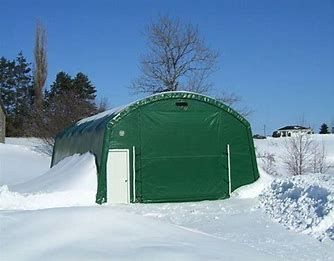
How to Maintain Your Lawnmower Tires During Winter Storage
When winter arrives, and your lawnmower takes its annual break, it’s easy to overlook the condition of its tires. However, proper tire maintenance during the off-season can significantly extend their lifespan and ensure your mower is ready to roll when spring returns.
Cold temperatures and months of inactivity can take a toll on your lawnmower tires, leading to flat spots, cracks, or loss of pressure. To avoid these common issues, follow this guide to keep your lawnmower tires in great shape while it’s stored for the winter.
# 1. Thoroughly Clean the Tires
Before putting your mower away, make sure the tires are free from dirt, grass, and debris.
- Remove dirt and debris: Use a stiff brush and mild soap to clean the treads and sidewalls. This prevents dirt from hardening and causing long-term damage.
- Inspect for stuck materials: Check the treads for small rocks, twigs, or other debris that might compromise the rubber over time.
A clean tire prevents grime from eating into the material and helps you spot any potential issues before they worsen.
# 2. Check for Damage
Winter storage is the perfect time to thoroughly inspect your tires for signs of wear or damage.
- Look for cracks: Cold temperatures can cause small cracks in aging rubber to expand. If you notice extensive cracking, it may be time to replace the tires.
- Examine the treads: Ensure the tread depth is adequate and that the tires haven’t worn unevenly.
- Inspect the sidewalls: Check for bulges or weak spots that could lead to a blowout next season.
Catching problems now can save you from costly repairs or replacements later.
# 3. Inflate to the Proper Pressure
Tire pressure often drops in colder weather, which can lead to flat spots or unnecessary stress on the sidewalls.
- Check the recommended pressure: Refer to your mower’s manual for the correct tire pressure levels.
- Inflate accordingly: Use a tire gauge to ensure the tires are properly inflated before storage.
- Recheck periodically: If you store your mower for several months, check the pressure every few weeks to ensure it stays consistent.
Maintaining the correct pressure prevents the tires from going flat and ensures even wear when your mower is back in use.
# 4. Elevate the Mower to Prevent Flat Spots
Long-term storage can cause tires to develop flat spots where they rest on the ground.
- Use a jack or blocks: Elevate the mower slightly off the ground to relieve pressure from the tires.
- Rotate tire position: If elevating isn’t an option, move the mower periodically to prevent prolonged pressure on one section of the tire.
Preventing flat spots keeps your tires round and ready to roll when spring arrives.
# 5. Store the Mower in a Controlled Environment
Temperature fluctuations can wreak havoc on your tires, so storing your lawnmower in the right environment is crucial.
- Choose a dry, sheltered space: A garage, shed, or covered storage area protects the tires from freezing temperatures and UV damage.
- Avoid direct sunlight: Prolonged UV exposure can cause the rubber to crack and weaken over time.
- Use tire covers: If storing outdoors, consider using tire covers to shield them from the elements.
- A stable storage environment minimizes the risk of damage and keeps your tires in optimal condition.
# 6. Apply a Tire Protectant
Protectants can help keep the rubber supple and resistant to cracking during storage.
- Choose a silicone-based protectant: These products provide a protective barrier without degrading the rubber.
- Apply evenly: Use a clean cloth to apply the protectant, ensuring you cover the sidewalls and tread surface.
- Avoid petroleum-based products: These can dry out the rubber and cause more harm than good.
This extra step adds a layer of protection and keeps your tires looking and performing like new.
# 7. Plan for Replacement if Necessary
If you notice significant wear, damage, or aging, consider replacing the tires before spring.
- Check for dry rot: Tires older than five years may show signs of dry rot, even if they’ve been lightly used.
- Upgrade if needed: If your mower struggled with traction last season, it might be time to invest in better tires suited to your terrain.
Replacing tires in the off-season ensures your mower is ready to perform as soon as the grass starts growing.
Final Thoughts:
Taking the time to maintain your lawnmower tires during winter storage ensures they’ll last longer and perform better. From cleaning and inspecting for damage to proper inflation and storage techniques, these simple steps go a long way in protecting your investment.
When it’s time to replace your mower tires, trust Antego Tire & Wheel for durable, high-quality options that keep your equipment running smoothly. With a little care, your lawnmower will be ready to tackle the first mow of the season without a hitch.
Prepare today and enjoy a hassle-free spring tomorrow!



